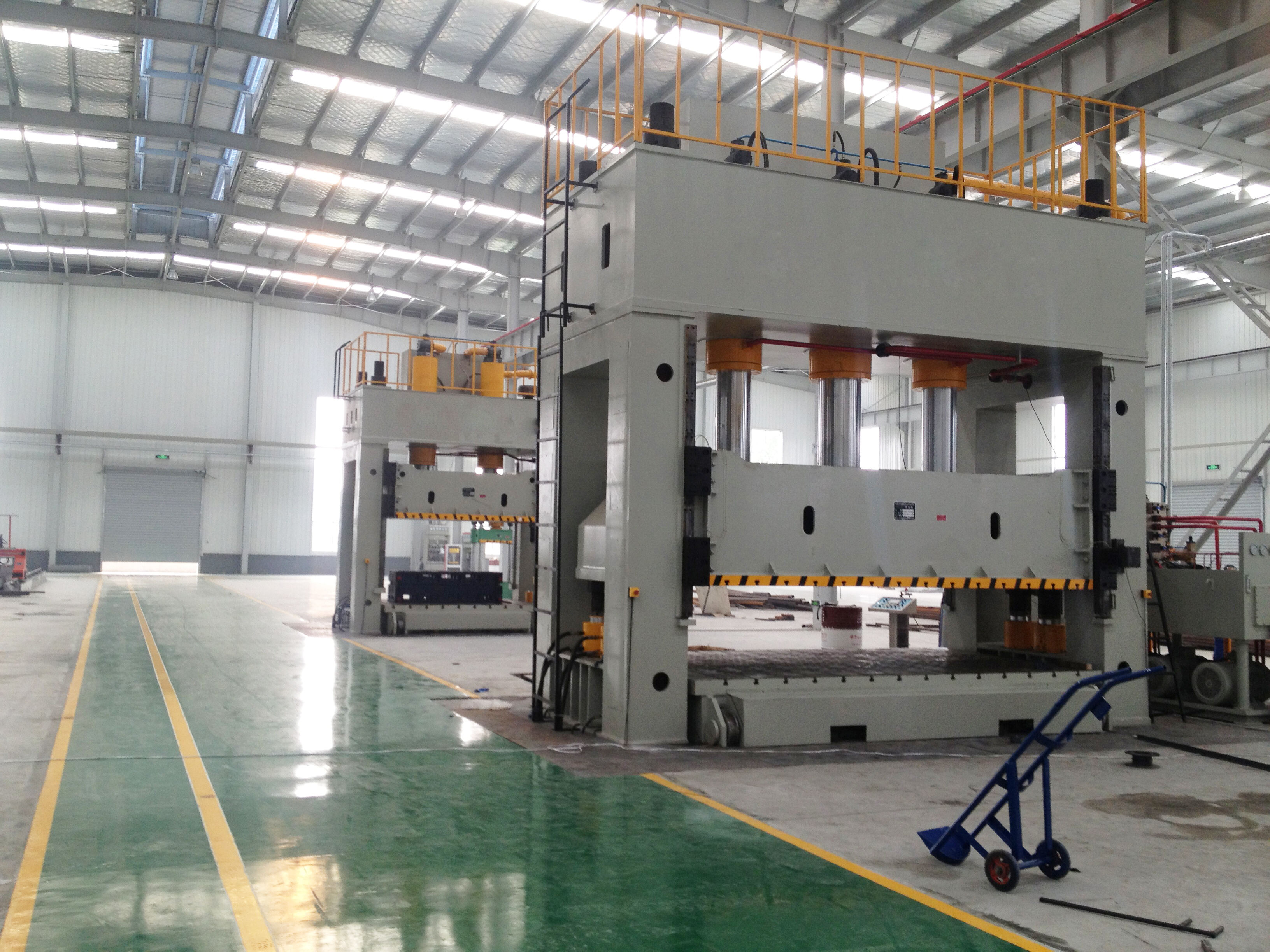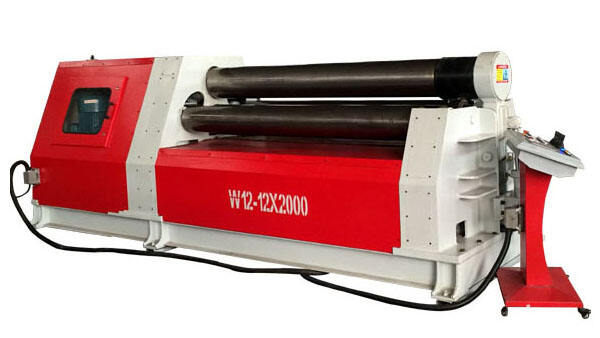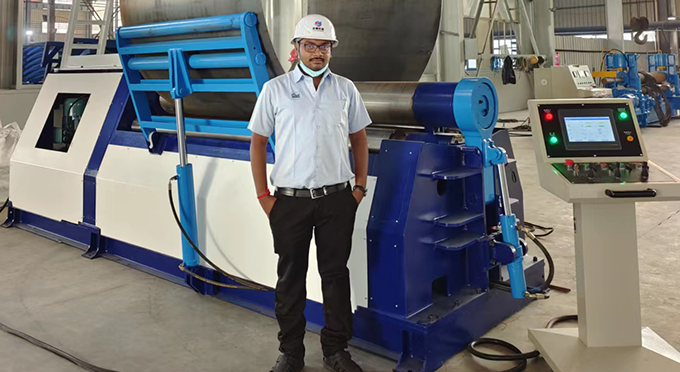Servo-Driven Hydraulic Presses: Precision, Efficiency, and Customization
How Closed-Loop Servo Systems Enable Unmatched Pressure and Motion Control
Today's servo driven hydraulic presses rely on closed loop control systems that can hit amazing precision levels around 0.001 mm for metal forming jobs. These machines get real time data from their pressure and position sensors which lets them tweak the servo motor speeds and pump outputs on the fly. This means no more those annoying pressure spikes we used to see with old school hydraulic systems. The adaptive motion profiles built into these presses cut down energy waste somewhere between 18 to 22 percent. Pretty impressive when considering they still manage to keep force accuracy within about half a percent even during complicated forming operations. A recent study looking at how these servo presses perform backs up these claims quite nicely.
Energy Efficiency and Performance Gains in Automotive Stamping Applications
Servo hydraulic presses in automotive stamping shops are making big strides in cutting down on power usage, somewhere around 30 to maybe even 40 percent when they implement those variable speed pumps. Some recent industry research from last year looked at major suppliers across North America and found that manufacturers producing car hoods saw their production cycles speed up by about a quarter compared to traditional methods. This improvement comes from stopping those pumps from running unnecessarily during downtime. What's really interesting though is how these closed loop systems work so precisely that they actually cut down on wasted materials too. The result? Parts get formed much closer to their final shape right off the press, which makes working with those tough high strength steels much more efficient overall.
Case Study: Optimizing Tonnage and Stroke in High-Precision Servo Press Forming
A European manufacturer reduced deep-drawing defects by 67% after retrofitting a 2,500-ton hydraulic press with a servo system. By programming multi-stage force curves and variable dwell times, the press maintained consistent wall thickness in aluminum battery housings, achieving <0.3 mm dimensional variance across 10,000 cycles.
Customization Strategies for Speed, Force, and Process Flexibility
Key customization parameters include:
- Speed modulation: Adjust ram velocity from 1–300 mm/s for materials ranging from titanium to polymer composites
- Force profiling: Create nonlinear pressure curves for incremental forming and bulge-type operations
- Tooling integration: Programmable PLC interfaces for quick-change dies and IoT-enabled process tracking
Future Trends: The Move Toward Full Electric-Servo Integration in Hydraulic Presses
Leading manufacturers are developing hybrid electric-servo hydraulic presses that combine brushless motors with compact hydraulic cylinders. This architecture reduces oil consumption by 55–60% while enabling <10 ms response times for microforming applications requiring tolerances under 0.1 mm.
Hybrid Electric-Hydraulic Presses: Balancing Power, Efficiency, and Retrofit Viability
The manufacturing world today needs equipment that combines brute strength with smart energy management. Take hybrid electric-hydraulic presses as an example. These machines strike a good balance between the precision of servo motors and the old-school punch of hydraulic systems. According to Fabricating & Metalworking from 2023, they can cut energy usage down by around 70% compared to what we used to have. What makes these systems special? They incorporate variable frequency drives along with regenerative circuits that actually capture energy when things slow down. This feature works particularly well for operations involving lots of starting and stopping, such as stamping and forming tasks. Many older presses can be upgraded to handle these advanced hybrid forming techniques now. Processes like bulging and single point incremental forming (SPIF) are becoming possible even on existing machinery. When applied to aluminum parts and high strength steel components, these methods reduce sheet thinning somewhere between 15% and 22%. Plus, manufacturers report saving anywhere from 30% to maybe half their energy bills when running moderate production volumes.
Smart Hydraulic Presses: Integrating Data Intelligence and Predictive Controls
PLC, Touchscreen, and Sensor Integration for Real-Time Process Monitoring
Modern hydraulic presses now come equipped with programmable logic controllers or PLCs, along with touch screen displays and internet connected sensors that keep track of things like pressure levels, heat changes, and how long each pressing cycle takes. These PLC systems handle all the automatic pressure tweaking and movement sequencing, which means no more headaches from those pesky manual calibration mistakes when working on complicated shaping jobs. The presses also have these multi axis load cells plus infrared cameras that capture detailed information about what's happening inside. All this data shows up on operator screens so they can tweak the timing of operations without sacrificing quality. Most machines can maintain incredibly tight specifications, often staying within just 0.1 millimeter variations even during high volume production runs.
Predictive Maintenance and Data Analytics to Maximize Uptime and Yield
The predictive maintenance algorithms work by looking at past performance data to predict when components might start wearing out, so companies can replace seals and valves before they actually fail. A recent report from 2024 showed that factories implementing these AI systems saw about 37 percent fewer unexpected shutdowns in their high production areas. For those not familiar with manufacturing terms, this means machines keep running longer without sudden stops. Another important feature is the vibration analysis part of these systems. They spot problems with frame alignment while doing deep drawing processes, which saves money because it stops expensive damage to tools that would otherwise need replacing.
Case Study: Reducing Downtime in Deep Drawing Lines with Smart Monitoring Systems
A major auto component maker saw a 32% drop in downtime for their deep drawing processes after implementing real time strain monitoring along with smart lubrication warnings. The system picked up on inconsistent material movement when shaping hood panels, which then prompted the machines to adjust ram speeds automatically. This helped cut down on those annoying wrinkles and cracks that used to plague quality control. By combining advanced data analysis techniques with machine learning algorithms, the factory boosted its yearly output by around 8,500 additional units. At the same time, they managed to slash energy usage per manufactured part by nearly 18%, something that makes both environmental and financial sense for operations managers looking to optimize efficiency without sacrificing product quality.
Enabling Advanced Material Forming Through Hydraulic Press Innovation
Forming Difficult-to-Process Materials with Adaptive Hydraulic Pressure Control
Modern hydraulic presses equipped with adaptive pressure controls can form tough alloys like titanium and those nickel based superalloys with about 15 to 20 percent fewer flaws compared to older static systems. These presses work differently because they have closed loop feedback mechanisms that constantly tweak how much force gets applied. This real time adjustment helps stop cracks from forming in materials that tend to break easily. The system keeps stress levels where they should be through constantly changing valves and using what's called proportional relief circuits to manage pressure fluctuations during the shaping process.
Minimizing Sheet Thinning in Incremental Forming Processes
Recent advances in hydraulic presses have managed to cut down sheet metal thinning during incremental forming processes by around 30 to 40 percent thanks to those fancy multi-axis toolpath controls. When it comes to keeping materials intact, these machines adjust pressure in sync across different points, which really helps maintain structural quality especially important for things like car bodies and airplane exteriors where strength matters most. Back in 2009 or thereabouts, some researchers published findings in the CIRP Annals about how combining hydraulics with electromechanical systems can produce walls of consistent thickness in aluminum parts too, with variations staying below half a millimeter when they monitor thickness continuously throughout production.
Case Study: High-Temperature Hydraulic Presses for Aerospace Alloy Hot Forming
One major aerospace component maker slashed their rib forming cycle times by half when they started using hydraulic presses that can handle temperatures around 850 degrees Celsius. These machines come with special ceramic lined cylinders plus smart cooling systems that keep things within a tight five degree range during titanium hot forming operations. What really stands out is how this new approach cut down on the need for extra machining after forming by about two thirds. The parts still hit all the required AS9100 specs too, something verified in a study looking at thermal forming processes back in 2021.
Sustainable Hydraulic Press Technology: Energy Savings and Lifecycle Cost Analysis
Energy-Efficient Design Metrics: VFDs, Regenerative Circuits, and Green Manufacturing
Hydraulic presses today can save anywhere between 20 to 35 percent on energy costs thanks to variable frequency drives and regenerative circuitry systems. The VFD technology works by adjusting motor speeds based on what's actually needed at any given moment, which cuts down wasted electricity when machines aren't working hard. Some tests show this alone can slash idle power use by nearly half. Then there are those regenerative circuits that grab hold of the kinetic energy produced when things slow down. A recent study published by MDPI found that for forging operations specifically, this method brings down overall energy consumption by around 28%. Smart companies are taking it one step further by combining all these efficiency gains with eco friendly hydraulic oils and frame designs that make upgrades easier later on. This combination makes good business sense while also helping meet growing environmental standards across manufacturing sectors.
Balancing Upfront Investment vs. Long-Term Savings in Modern Hydraulic Press Upgrades
Advanced hydraulic press upgrades entail 15–30% higher initial costs, but lifecycle analyses show ROI within 2–4 years due to:
- 18–25% lower energy expenses
- 60% reduced maintenance needs thanks to predictive systems
- 22% faster cycle times enabled by precision control
A 10,000 kN press retrofitted with hybrid electric-hydraulic components achieved payback in three years while reducing annual CO2 emissions by 42 metric tons.
The Role of Sustainable Press Design in B2B Industrial Supply Chains
As automotive and aerospace OEMs prioritize Scope 3 emissions reductions, 78% of tier suppliers now require ISO 50001-certified hydraulic equipment. Sustainable press designs support circular economy goals through:
- Material efficiency gains (≥0.2 mm sheet thinning vs. 0.5 mm in legacy presses)
- 95% recyclability of steel components
- Compliance with emerging carbon tariffs
This shift has driven the creation of a $2.1 billion market for energy-efficient forming technologies as of 2023, fueled by cross-industry decarbonization initiatives.
FAQ
What is a Servo-Driven Hydraulic Press?
A servo-driven hydraulic press uses a closed-loop servo system for precise pressure and motion control, enhancing efficiency and customization in forming processes.
How do hybrid electric-hydraulic presses provide efficiency?
These presses balance power and precision by integrating servo motors and hydraulic systems, leading to significant energy savings and improved forming capabilities.
What is the role of data intelligence in smart hydraulic presses?
Data intelligence helps in real-time monitoring and predictive maintenance, reducing downtime and optimizing hydraulic press operations.
How do energy-efficient hydraulic designs benefit manufacturers?
They offer 20–35% energy savings and align with environmental standards, ultimately reducing lifecycle costs and increasing ROI.
Table of Contents
-
Servo-Driven Hydraulic Presses: Precision, Efficiency, and Customization
- How Closed-Loop Servo Systems Enable Unmatched Pressure and Motion Control
- Energy Efficiency and Performance Gains in Automotive Stamping Applications
- Case Study: Optimizing Tonnage and Stroke in High-Precision Servo Press Forming
- Customization Strategies for Speed, Force, and Process Flexibility
- Future Trends: The Move Toward Full Electric-Servo Integration in Hydraulic Presses
- Hybrid Electric-Hydraulic Presses: Balancing Power, Efficiency, and Retrofit Viability
- Smart Hydraulic Presses: Integrating Data Intelligence and Predictive Controls
- Enabling Advanced Material Forming Through Hydraulic Press Innovation
- Sustainable Hydraulic Press Technology: Energy Savings and Lifecycle Cost Analysis
- FAQ




